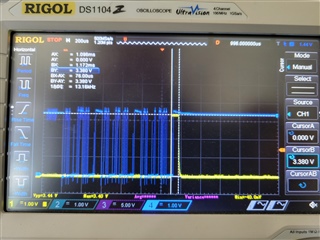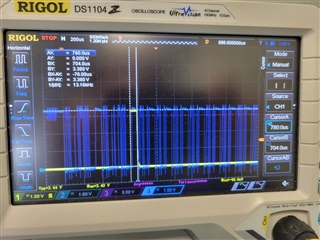Hello,
1.) I've just started working with the TCA6418E and am in the middle of bringing up the board. I've inadvertently left the reset pin floating on the TCA6418E on the latest rev of my design. Per the datasheet, I understand that this is to be pulled up if not actively used. Given that I don't have a good method to probe the pin, I'm left wondering exactly how risky this is. i.e. is it risky enough to warrant a revision change on the PCB.
2.) Additionally, on pg. 14 of the datasheet, in regards to the GPIO Data Out Registers, it states: "This is needed so that the value can be written prior to being set as an output." Does this mean that the Data Out registers must be written to prior to setting as an output? Or is it perfectly fine to set the output direction, and then the Data out?
3.) Lastly, I'm noticing an issue where an output that I've written appears to not be latching. My write sequence is as follows:
0x34, 0x17, 0x50 // Set up GPIO 1&3 as output high
0x34, 0x2C, 0x50 // disable GPIO 1&3 pulldowns (not even sure this is required given that I configure as output)
0x34, 0x23, 0x50 // Set GPIO 1&3 as outputs
The result (after 3 ACKs from the above commands) is that GPIO 1&3 go high for about 76us, but then immediately go low (see scope shot below, Blue channel is the I2C data with above commands, and yellow is GPIO3). Is there something I'm missing in terms of needing to latch the outputs, or is there a possibility that the floating reset is causing this? Any help is greatly appreciated.
Thanks,
Justin




